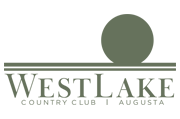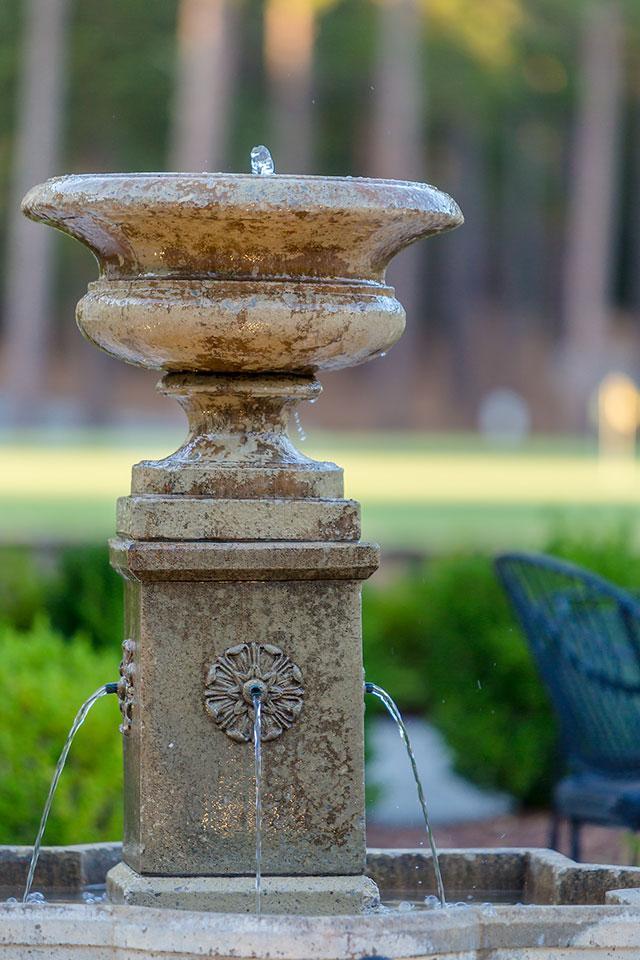Study of the project clearly indicated that building and maintaining a golf course could not be financed without attachment to a real estate development. The plan was so outlined. With this, established additional tracts of 150 acres and 212 acres (including a 43 acre lake as a source of water for the sprinklers) were obtained, bringing the total to 717 acres. They now had enough land and believed the proposal was feasible.
A corporation, West Lake Development Company, was created with fifty participants owning equal shares of stock. James G. Swift, a local engineer (and one of the fifty) was engaged to design the project. In mid 1966, Donald Ross protégé Ellis Maples from Pinehurst, NC, was chosen to design the 18-hole golf course. Maples had designed the outstanding Pinehurst No. 5. His chief assistant on the job was Ed Seay, who later became the principal architect for Arnold Palmer's Company.
With the guidance of Maples, a contractor was hired to start in April 1967. Harry Crosby was hired as General Manager in that month and in May, Johnny Graves, Course Superintendent of the Augusta National, joined the group. Many were the cuts and bruises for Harry Crosby, Jim Swift and Johnny Graves, as they "walked" the undeveloped land prior to the clearing and rough outlining of the holes.
Construction, in the beginning, was funded by shareholders' equity and later augmented with bank loans. Maples' stated timetable was to have nine holes ready for play in late Fall 1967. By June 1967, this plan was recognized as ridiculous and was quickly revised to have all 18 holes ready for play in Fall 1968.
From the start of construction, troubles and hidden problems arose. More earth movement occurred than planned and designated pond areas were too wet to be formed by bulldozers and had to be excavated by drag-line (dredge). Water for irrigation was adequate, but the lake channel had to be relocated to reach supply pipes. All of these took more time and more money.
The clearing and disposal of trees during this time period was a monumental task, which would have been almost cost prohibitive today. At that time, the trees were piled high and burned- probably not allowable under current environmental limits. There were a few interesting discoveries, such as a natural spring to the left of the sixth green leading to a wet area (now a pond) where a substantial moonshine still was found.
With all of the difficulties and delays, clearing and grading was sufficiently complete by Fall of 1967 to show the shape of things to come. During the winter, most work was slowed except for the laying of underground irrigation piping.
By late March 1968, there were visible signs of progress, such as the final grading of fairways, bunkers and tees. The greens were formed, sprinkler heads were connected to the sprinkler system and the pump house for the system was constructed on the big lake. In 1968, construction began on the early clubhouse which boasted only a small lunch area, a smaller kitchen, pro shop, cart maintenance area and men's and ladies' locker rooms. It is interesting to note that the men's locker room was beautifully appointed with carpeted floors, stained wooden lockers, and what many called the most comfortable chairs ever. This attention to detail rivaled many similar size finer clubs across the country. In early 1969, work began on building a 50-meter "L" shaped swimming pool with a deep diving well. Shortly thereafter, 4 latex tennis courts were built.
By mid-summer 1968, all phases of development were moving forward. Bermuda grass planted and growing, lot development underway, major utility installations in and clubhouse construction in progress. However, in August, a fierce rainstorm struck the area; fierce enough to drop 4 inches of rain in one hour and to collapse the roof of Whites Store at National Hills. At West Lake, water carried away the earthen dam holding the pond at the 18th green and, even worse, tore trenches across newly planted fairways in dozens of places washing young grass shoots and soil in its torrent. The dam was rebuilt and West Lake's small maintenance crew replanted over 100,000 square feet of sod to repair the damage. Plans to play the course in Fall 1968 were postponed until Spring, 1969.
In October 1968, Mark Darnell was selected as Golf Professional and was drafted to help with the finishing of the golf course work. Finally, by March 1969, the golf course was playable and the Clubhouse available for basic use. Original access to the clubhouse was by dirt road from Evans-Lock Road behind the 8th green and along the right side of the 9th fairway. Any serious rain meant no golf since players could not get to the clubhouse! In May, the paving of Pebble Beach Drive was accomplished and access became less of a challenge. At this time, West Lake Country Club was incorporated as a wholly subsidiary of the Development Company and control was vested in the Board of that company.
In the early months, players were enthusiastic in their praise of the layout and the greens unhampered by age and helped by minimal play were highly praised and declared superior to most local courses. At first, few roughs had been cleared. A ball was either in the fairway or lost--a great challenge to most. Largely due to the Master's Tournament, the first few months brought many people from the golf world to play- Byron Nelson, Gene Sarazan (later a non-resident member), Tony Jacklin and officials from the Royal and Ancient in Scotland. This fortunate exposure was priceless.
An arrangement with Sports Illustrated brought over 100 business people to Augusta for Masters Week, allowed them to play the course and thus gaining additional exposure and income for the club. By mid-1969, lots of homes were ready and the first house (built for Mark Darnell) was started in November of that year. However, the growth of real estate sales was very disappointing. Local people thought it was too far from the city and believed it could not succeed. Fortunately, people moving from other parts of the country often said it was great to have this facility so close to town!
At the end of 1973, nearly 100 homes were established in the first two developed sections. The West Lake board, with courage and great optimism, decided to undertake a number of expansion projects concurrently---development of a third section of homesites along what is now West Lake Drive, large expansion of the Clubhouse, automation of the golf course irrigation system and construction of eight composition clay tennis courts.
These improvements, completed in 1974, were largely financed with bank loans and by the assessment of members who, by then, numbered 275. The rapid increase in operating costs of the club, along with the explosive increase of interest rates, created substantial losses in 1975 and 1976 which could not be offset by the moderate increase in real estate sales and club income. By late 1975, the need for additional lot inventory required developing a new section beyond the clubhouse on Pebble Beach Drive. The struggle through 1976 and 1977 with moderate growth in sales failed to offset the higher operating costs of the club. Even an aggressive, successful drive for the new members was not enough to solve this continuing problem which was compounded by the explosive rise in interest rates by now at 23 percent. In mid-1977, bankers were pressing for payments of interest and principal. At the same time, some West Lake officers were in difficulties with other investments and had reduced leverage with bankers.
By late 1977, something had to be done. A sale of the club facilities to the club members was negotiated between the banks, West Lake Development Company, and West Lake Members, Inc. In effect, the banks lent members funds to buy the club facilities at a favorable price leaving the development company with the balance of the land and the larger portion of the debt. This deal was formally concluded in December 1977.
Concert Golf Partners purchased West Lake Country Club in May, 2015.
Written by West Lake Country Club's first General Manager, Harry Crosby.




